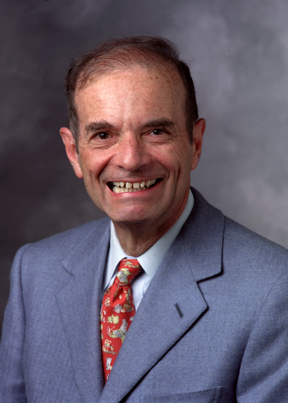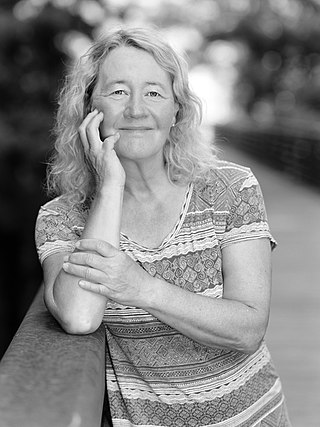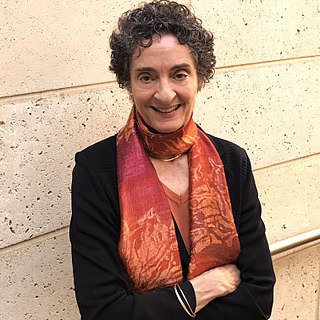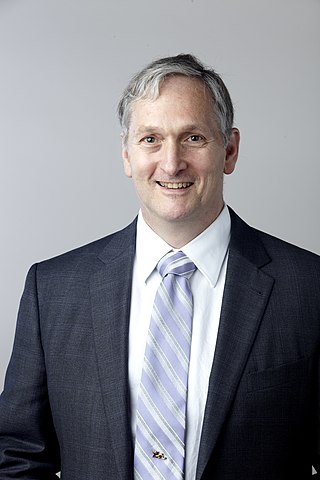Related Research Articles

Walter Gilbert is an American biochemist, physicist, molecular biology pioneer, and Nobel laureate.
Margaret Stratford Livingstone is the Takeda Professor of Neurobiology in the Department of Neurobiology at Harvard Medical School in the field of visual perception. She authored the book Vision and Art: The Biology of Seeing. She was elected a member of the American Academy of Arts and Sciences in 2015 and was elected to the National Academy of Sciences in 2020.

Lubert Stryer was an American academic who was the Emeritus Mrs. George A. Winzer Professor of Cell Biology, at Stanford University School of Medicine. His research over more than four decades had been centered on the interplay of light and life. In 2007 he received the National Medal of Science from President Bush at a ceremony at the White House for elucidating the biochemical basis of signal amplification in vision, pioneering the development of high density microarrays for genetic analysis, and authoring the standard undergraduate biochemistry textbook, Biochemistry. It is now in its tenth edition and also edited by Jeremy Berg, Justin Hines, John L. Tymoczko and Gregory J. Gatto, Jr.

Carolyn Widney Greider is an American molecular biologist and Nobel laureate. She is a Distinguished Professor of Molecular, Cell, and Developmental Biology at the University of California, Santa Cruz.

Müller glia, or Müller cells, are a type of retinal glial cells, first recognized and described by Heinrich Müller. They are found in the vertebrate retina, where they serve as support cells for the neurons, as all glial cells do. They are the most common type of glial cell found in the retina. While their cell bodies are located in the inner nuclear layer of the retina, they span across the entire retina.

Carla J. Shatz is an American neurobiologist and an elected member of the American Academy of Arts and Sciences, the American Philosophical Society, the National Academy of Sciences, and the National Academy of Medicine.

Ann Kiessling is an American reproductive biologist and a researcher in human parthenogenic stem cell research at The Bedford Research Foundation. She was an associate professor in teaching hospitals of Harvard Medical School from 1985 until 2012.

Gail Roberta Martin is an American biologist. She is professor emerita in the Department of Anatomy, University of California, San Francisco. She is known for her pioneering work on the isolation of pluripotent stem cells from normal embryos, for which she coined the term 'embryonic stem cells'. She is widely recognized for her work on the function of fibroblast growth factors and their negative regulators in vertebrate organogenesis. She and her colleagues made contributions to gene targeting technology.
Xiaowei Zhuang is a Chinese-American biophysicist who is the David B. Arnold Jr. Professor of Science, Professor of Chemistry and Chemical Biology, and Professor of Physics at Harvard University, and an Investigator at the Howard Hughes Medical Institute. She is best known for her work in the development of Stochastic Optical Reconstruction Microscopy (STORM), a super-resolution fluorescence microscopy method, and the discoveries of novel cellular structures using STORM. She received a 2019 Breakthrough Prize in Life Sciences for developing super-resolution imaging techniques that get past the diffraction limits of traditional light microscopes, allowing scientists to visualize small structures within living cells. She was elected a Member of the American Philosophical Society in 2019 and was awarded a Vilcek Foundation Prize in Biomedical Science in 2020.
Christine Elizabeth Holt is a British developmental neuroscientist.

Retinal homeobox protein Rx also known as retina and anterior neural fold homeobox is a protein that in humans is encoded by the RAX gene. The RAX gene is located on chromosome 18 in humans, mice, and rats.
Sheila Nirenberg is an American neuroscientist and professor at Weill Cornell Medical College. She works in the field of neural coding, developing new kinds of prosthetic devices that can communicate directly with the brain, and new kinds of smart robots. She is a recipient of a MacArthur “genius” award and has been the subject of, or featured in, several documentaries for her technology for treating blindness.

Clifford James Tabin is chairman of the Department of Genetics at Harvard Medical School.

Christopher A. Walsh is the Bullard Professor of Neurology at Harvard Medical School, Chief of the Division of Genetics at Children's Hospital Boston, Investigator of the Howard Hughes Medical Institute, and the former Director of the Harvard–MIT MD–PhD Program. His research focuses on genetics of human cortical development and somatic mutations contributions to human brain diseases.
Frank Werblin is Professor of the Graduate School, Division of Neurobiology, at the University of California, Berkeley.
Lily Yeh Jan is a Taiwanese-American neuroscientist. She is the Jack and DeLoris Lange Professor of Physiology and Biophysics at the University of California, San Francisco, where she collaborates with her husband Yuh Nung Jan as co-PIs of the Jan Lab.
John E. Lisman was the Zalman Abraham Kekst Chair in Neuroscience at the Brandeis University in Waltham, Massachusetts. He was Professor of Biology, noted for his research on amplification and switching in signal transduction, memory, and neurological diseases such as schizophrenia and Alzheimer's disease. For his research, he was elected a Fellow of the American Association for the Advancement of Science in 2013.
Alfred Lewis Goldberg was an American cell biologist-biochemist and professor at Harvard University. His major discoveries have concerned the mechanisms and physiological importance of protein degradation in cells. Of wide impact have been his lab's demonstration that all cells contain a pathway for selectively eliminating misfolded proteins, his discoveries about the role of proteasomes in this process and of the enzyme systems catalyzing protein breakdown in bacteria, his elucidating the mechanisms for muscle atrophy and the role of proteasomes in antigen presentation to the immune system, and his introduction of proteasome inhibitors now widely used as research tools and in the treatment of blood cancers.
Paul Michael Wassarman is an American biologist who has been Professor in the Dept. of Cell, Developmental, and Regenerative Biology at the Icahn School of Medicine at Mount Sinai since 1996. His laboratory identified and characterised proteins that make up the zona pellucida (ZP) of mammalian eggs and determined their role in fertilisation.

Felicia Keesing is an American ecologist and the David & Rosalie Rose Distinguished Chair of the Sciences, Mathematics, and Computing at Bard College in Annandale-on-Hudson, New York.
References
- 1 2 "Phil Sharp's Lab – Alumni". mit.edu. Retrieved December 12, 2014.
- ↑ Cepko, C. L.; Roberts, B. E.; Mulligan, R. C. (1984). "Construction and applications of a highly transmissible murine retrovirus shuttle vector". Cell. 37 (3): 1053–62. doi:10.1016/0092-8674(84)90440-9. PMID 6331674. S2CID 34544709.
- 1 2 3 Brownlee, C (2004). "Biography of Constance L Cepko". Proceedings of the National Academy of Sciences. 101 (1): 14–5. doi: 10.1073/pnas.0307955100 . PMC 314129 . PMID 14695892.
- ↑ Constance Cepko's publications indexed by the Scopus bibliographic database. (subscription required)
- ↑ Ricciardi, R. P.; Jones, R. L.; Cepko, C. L.; Sharp, P. A.; Roberts, B. E. (1981). "Expression of early adenovirus genes requires a viral encoded acidic polypeptide". Proceedings of the National Academy of Sciences of the United States of America. 78 (10): 6121–5. Bibcode:1981PNAS...78.6121R. doi: 10.1073/pnas.78.10.6121 . PMC 348989 . PMID 6947217.
- ↑ "BS Administrative Contacts". Harvard.edu. Retrieved December 1, 2016.
- ↑ "Bressler Prize in Vision Science". ighthouseguild.org. Archived from the original on September 17, 2017. Retrieved November 1, 2016.
- ↑ "Bressler Prize in Vision Science Recipients". ighthouseguild.org. Archived from the original on September 17, 2017. Retrieved November 1, 2016.
- ↑ "Dr. Constance L. Cepko to deliver Lisman Memorial Lecture in Vision Science and receive award | All News | News and Events | Brandeis Alumni & Friends | Brandeis University". alumni.brandeis.edu. Retrieved February 8, 2020.